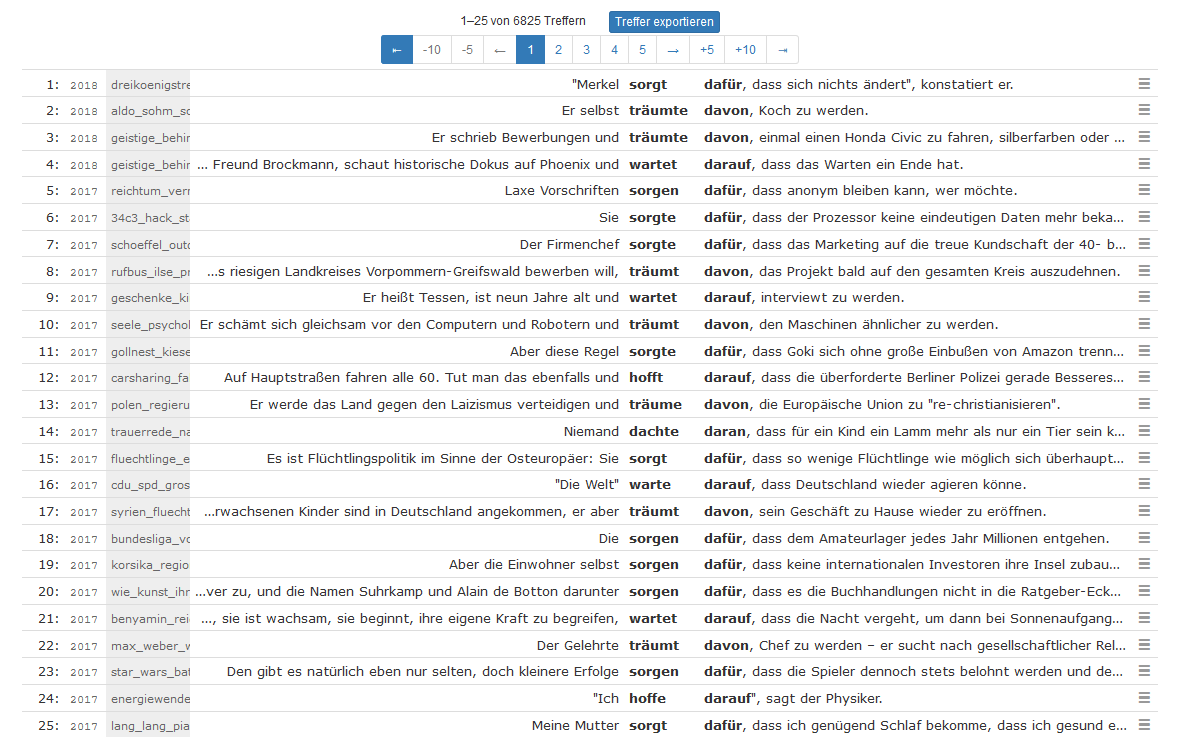Verb-Preposition Collocations 3
In the previous modules VPC 1 and VPC 2, you practiced using VPCs with nouns. In this module, we focus on how VPCs are used with personal pronouns and the so-called da-compounds (pronominal adverbs). Note that da-compounds (davon, dabei…) are extremely frequent in German, unlike their English counterparts (‘thereof’, ‘thereby’…).
Activity 1
The sentences below are taken directly from the DWDS corpus and show examples of denken an followed by a personal pronoun. Read the sentences carefully and choose the part of the text to which the pronoun in the denken an + pronoun construction refers.
Activity 2
The corpus examples below show examples of the the verb denken followed not by a preposition + personal pronoun but by the da-compound daran. Read the sentences carefully and choose the part of the text to which the denken daran construction refers.
Activity 3
Review Activities 1 and 2, paying special attention to the differences between the constructions that they use. Then complete the exercise below by choosing the rule that best reflects the difference between the denken an + pronoun and the denken daran constructions.
Activity 4
Using the rule above as a guide, complete the dialogue below.
Activity 5
On your own. In the activity above Michael agrees with everything that Katya says. As you are not a copycat like Michael, write out responses to Katja’s questions using ‘yes’ and ‘no’ answers as appropriate.
For example:
Ja, ich denke auch daran. OR
Nein, ich denke nicht an ihn.
Activity 6
Now let’s look at some corpus examples of VPCs used with da-compounds and determine which prepositions combine with da- and which prepositions combine with dar. If you find the text hard to read, you can go directly to the DWDS Corpus using the link provided below the image.

Activity 7
Go to the DWDS website and review the following corpus examples that show question pronouns and wo-compounds. Using what you have learned, choose the correct word(s) from the pull-down menu to complete the questions Katja might ask you. The first two have been done for you.
Activity 8
On your own. Write answers to Katja’s questions above and then create five similar questions that you might want to ask your classmates.
Nina Vyatkina

